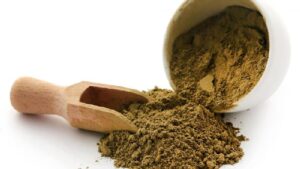Tarragon is an aromatic herb that is commonly used in ancient French cuisine as a seasoning. Artemisia dracunculus, also known as this herb, contains lots of beneficial nutrients.
Farmers often grow this for its aromatic and therapeutic properties. Despite their small size, the flowers smell antiseptic and are pastel green in color. Salads and pizzas use tarragon leaves as an ingredient.
In terms of health, skin, hair, and hair care, the leaves and residue of the tarragon plant are very beneficial. Herbs such as fennel, anise, and licorice have a pungent flavor that is somewhat similar to that of the herb.
Tarragon has a number of important health benefits. In the list below, we have compiled some of them.
Tarragon Health Benefits
1. Keep your healthy heart.
You can protect your heart from cardiovascular disease by eating tarragon leaves on a regular basis. As a result of the anti-inflammatory properties of antioxidants, vessels are protected from damage caused by inflammation. Aside from these minerals, tarragon leaves also contain potassium, which is an important mineral in regulating the contraction of the digestive tract.
Additionally, it contains certain chemical compounds that keep platelets and other blood components from curdling and accumulating in the blood vessels of the heart, which can cause a heart attack.
2. Weight loss with tarragon tea
There is a long history of Tarragon being consumed as a digestive tonic. It has been proven that adding it to the diet can increase the liver’s production of digestive fluids that are essential for efficient digestion. As a result of consuming tarragon or drinking tea made from tarragon, the stomach will be settled, and a series of digestive problems related to poor digestion will be relieved. If you switch to tarragon tea, you will find that you are able to reduce unnecessary hunger pangs, improve digestion, and lose weight as a result.
3. The benefits of tarragon tea for insomnia
By regulating the blood circulation in the body, Tarragon ensures the proper distribution of nutrients and oxygen throughout the body as well. In addition, it flushes out toxins from your body as well as detoxifies it as well. It is believed that this process helps stop the formation and growth of cancer cells, thereby preventing severe affliction from occurring. When tarragon tea is added to one’s diet, it relaxes one’s nerves, regulates one’s cardiovascular system, treats insomnia, and regulates the nervous system.
4. It improves digestion
There are numerous phytonutrients in this exquisite herb that contribute to good health.
As a traditional remedy, tarragon has been used as a stimulant of appetite and an agent that relieves anorexic symptoms for centuries. In addition to being an extremely rich source of vitamins, this herb contains a large number of B-complex vitamins, which act as antioxidants and cofactors for enzymes in the metabolism, thereby helping to speed up the process.
5. Improves the quality of hair
Keeping lovely hair is one of the dreams of many individuals, and it can be achieved with the use of tarragon. As far as the quality of one’s hair is concerned, Tarragon has proven to be very effective. The extracts of tarragon are present in some styling products, shampoos, conditioners, and natural shampoos. In terms of dry hair, it contributes to the luster of the hair, so it is very helpful for those who have dry hair. It is recommended to use tarragon products regularly in order to keep the hair healthy and vibrant.
What Are Tarragon uses?
Take advantage of all the tarragon benefits by eating these foods:
1. The addition of tarragon to salads is one of the best things you can do. In terms of taste, it has a slightly sour, peppery flavor that goes well with greens and other vegetables.
2. Tarragon can be used in poultry dishes, such as chicken and turkey. Mushrooms and onions complement it exceptionally well.
3. Fish dishes can also benefit from the addition of tarragon. It goes well with white fish, such as cod or halibut.
4. Sauces and condiments are another great way to use Tarragon. Whether you’re making hollandaise or béarnaise, it’ll enhance the flavor.
5. Besides being used as a flavoring for vinegar and oil, tarragon can also be used as an ingredient in salad dressings.
Now that you know which foods taste best when combined with tarragon, you have to know if it is safe to consume raw tarragon leaves as well. Known as a sweet, licorice-like herb, tarragon can be eaten raw and has a unique, sweet, licorice-like flavor. Tarragon is best used in the early spring due to the fact that it loses its flavor over the summer. It is possible to use the leaves of tarragon as a garnish for meat dishes or as an ingredient in salads.
Final Thoughts:
Lastly, Tarragon is a great herb to add to your culinary repertoire. There is a slight anise flavor to it, and it goes well with fish and chicken. Besides being delicious, it’s also loaded with nutrients. In addition to its vitamin C content, tarragon is also a good source of magnesium, potassium, and zinc.
However, before adding Tarragon to your diet, you should be aware of its side effects. Dizziness is sometimes experienced after consuming Tarragon. Try a small amount of this herb if you are new to it.
As a result of this article, you now know everything there is to know about Tarragon, from its nutritional value to its side effects and benefits. Make your food more flavorful and nutritious by adding this herb.
If you liked this post, please let us know in the comment and tell us if you ever used tarragon for its health benefits.






